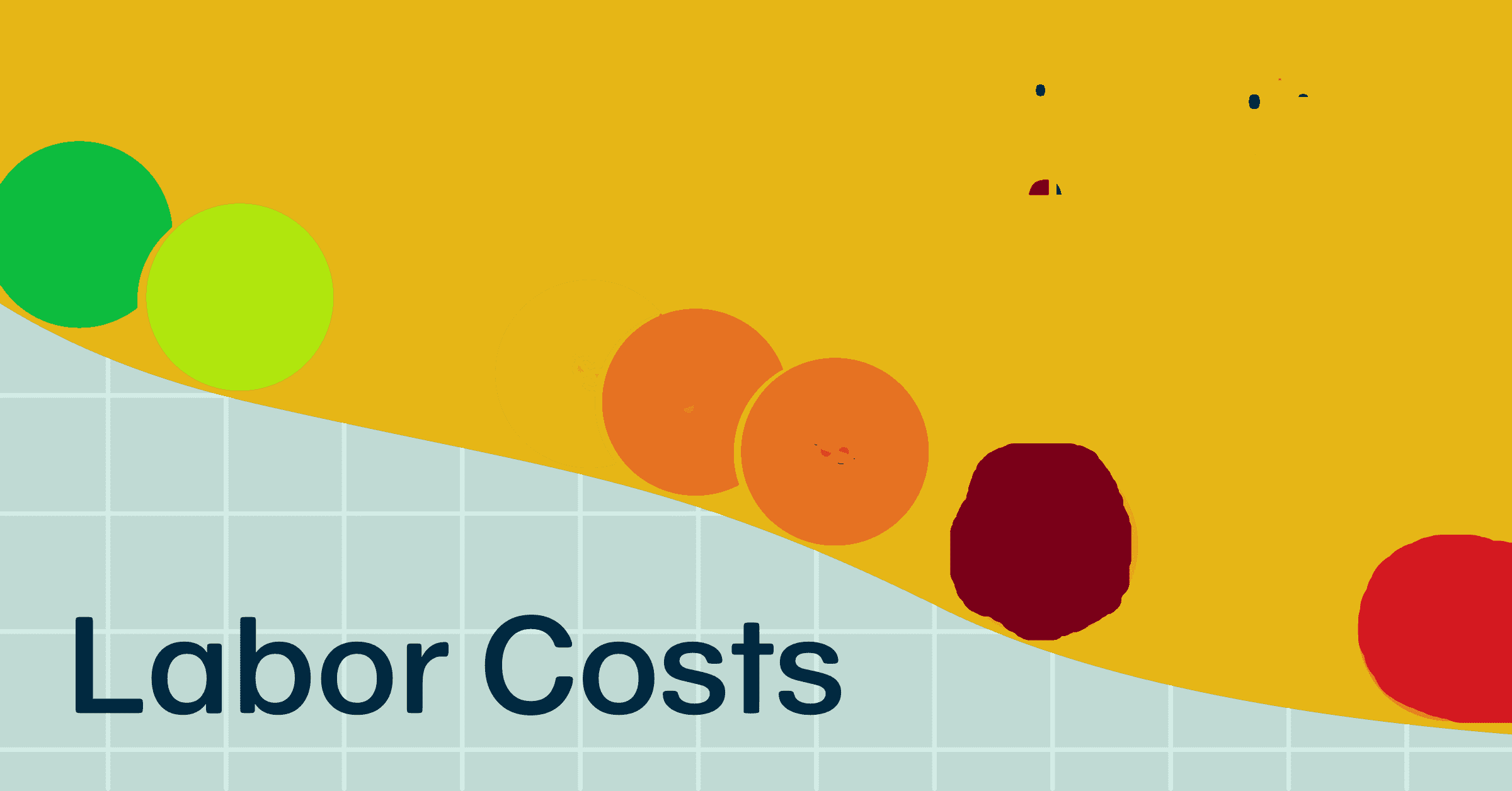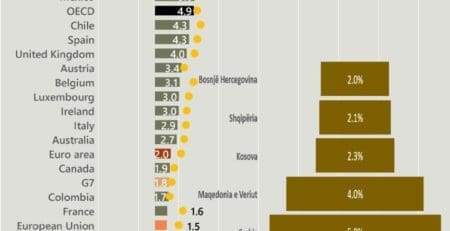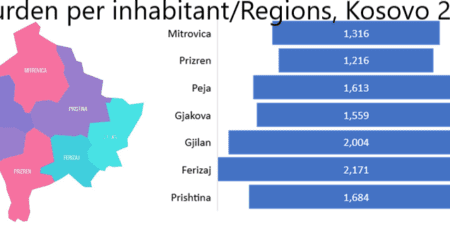What is the hourly labor cost in the Western Balkans and how much is it affected by productivity?
According to the international understanding of unit labor cost, it is seen as a broad measure of (international) price competition. It is calculated as the ratio of wages together with work-related compensations and bonuses to working hours. The calculation is made either based on monthly or even annual income from work before tax. If we divide this income by the number of hours, then the hourly cost of work also results (the average income from annual work in 2023 is 900,000 ALL per year and if 2,304 working hours were worked during the year, then the cost of work for 1 hour is 390.6 ALL/hour).
Cost per unit of time (labor hours) shows that increases in hourly compensation tend to increase unit labor costs. In countries with high labor costs, as a rule, there is also an increase in production per hour worked, or labor productivity. The higher productivity, the more it tends to reduce the impact of unit labor costs, a key component of price change. By reducing unit labor cost growth, increased productivity reduces inflationary pressure on prices.
Productivity and costs of an activity are indicators of economic data that are used to measure and predict inflation trends. Productivity measures the labor efficiency and health of a country’s manufacturing, trading and service sectors. Cost measures the cost per unit of labor to produce each unit of goods and services in an economy. The cost in this case also includes other elements besides the value of work per unit, such as goods/raw material, administrative expenses, expenses related to the realization of income, etc.
In the data collected and processed by ALTAX for the year 2023, the average cost of labor in the Western Balkans (BP6) was estimated at €5.2. But, if we look at each BP6 country, there are changes that also bring to attention the differences in productivity between countries, where the lowest average hourly labor cost in Kosovo is €3, in Albania €3.8, in Macedonia and In the North €5.9, in Montenegro €6, in Bosnia-Herzegovina €6.1 and in Serbia €6.5.
In the latest publication by the EU on average hourly labor costs in 2023, they were estimated at €31.8 in the EU and €35.6 in the euro area. However, this average masks significant gaps between EU member states, with hourly labor costs ranging from €9.3 in Bulgaria, €11 in Romania, €12.8 in Hungary, €14.4 in Croatia, 15 €.7 in Greece and up to €24.6 in Spain, €29.8 in Italy, €38.9 in Sweden, €41.3 in Germany, €42.2 in France, €43.3 in the Netherlands, €51.9 € in Norway and € 53.9 in Luxembourg.
Labor productivity in 2023 is 4.8% in Serbia, 0.5% in Albania, -0.4% in Kosovo, 2.9% in Bosnia-Herzegovina, 1.2% in North Macedonia and 1.2% in Mali Black fell to -5.2%.
By juxtaposing unit labor cost and labor productivity data in BP6, it appears that labor costs are increasing, but productivity is not.
In this view, if labor productivity were to increase, then income would generally increase as well. But, while in all BP6 countries, the cost of hourly labor in 2023 has increased by an average of 5-6% compared to the previous year, it seems that there is no such increase in productivity, based on the indicators above. From this trend that we understand from the summarized data, we can say, albeit with reservations, that while wages have increased on average up to 6%, labor productivity has increased on average no more than 0.6%, which means that the profitability of businesses has decreased somewhat and they are less competitive.
Low competition among workers for jobs tends to drive up the rate of wage growth. And this trend is happening at a time when labor productivity is increasing slightly or in certain quarters has even fallen during 2023.
Without productivity growth, wage increases and increases in the minimum wage relative to the average wage are all added payroll costs that cannot be covered by actual labor productivity. Employers today have even less room to raise wages to meet wage competition from other neighboring countries.
General economic principles suggest that the solution to labor shortages is higher wages. Higher wages attract workers and higher labor costs dampen the demand for labor.
Wages can rise so far in an economic environment with low productivity for the strong reason that after the departure of employees to foreign markets, a part of the businesses will also leave. If this drain on the economy is to be prevented, then the proposed measures must begin to be discussed in order to be implemented as soon as possible.
While we try to treat the symptoms with increased immigration, the long-term cure for what ails us is investment and innovation to drive productivity growth.
We need to invest at least several times the current value in research and development to drive innovation to increase productivity. And most of all, we need a government that realizes it has the power to cure this disease.
Politicians should pay more attention to the conditions that enable business to survive in what, due to its location and population, is already an uncompetitive country.




Leave a Reply
You must be logged in to post a comment.